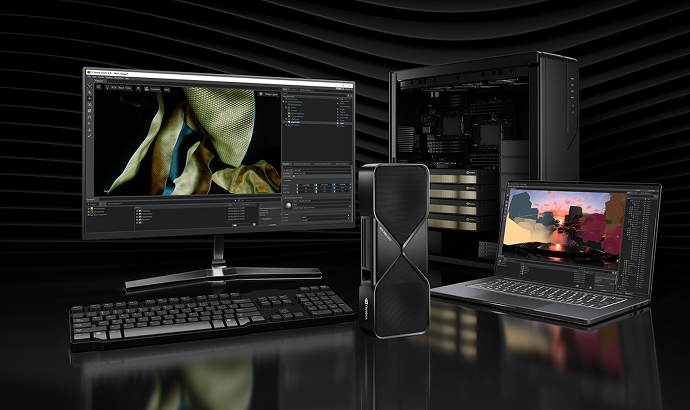

Writing About AI
Uvation
Reen Singh is an engineer and a technologist with a diverse background spanning software, hardware, aerospace, defense, and cybersecurity. As CTO at Uvation, he leverages his extensive experience to lead the company’s technological innovation and development.

Modern Large Language Model (LLM) workloads, such as retrieval-augmented generation (RAG), multimodal inferencing, and fine-tuning, require consistent and sustained performance. However, these demanding tasks are vulnerable to power-related failures. A single-point power failure can halt training runs, unbalanced thermal profiles can restrict memory throughput, and inadequate power provisioning can limit GPU performance, even if the specifications are met. Therefore, ensuring robust power management and redundancy is not just about preventing downtime; it’s about guaranteeing operational continuity, maximising GPU utilisation, and mitigating significant risks and costs associated with AI failures.
The NVIDIA H200 is designed with infrastructure-grade safeguards to manage power effectively for enterprise AI. Key features include a 700W maximum power draw per GPU, which necessitates intelligent provisioning at the rack level to prevent brownouts or performance capping. It also incorporates dynamic thermal monitoring to balance GPU core and HBM (High Bandwidth Memory) temperature zones, preventing memory throttling under burst LLM workloads. Furthermore, it supports multi-rail power redundancy (via MGX, HGX, or BasePOD) to ensure continued operation even if one power rail fails. Real-time power statistics integrated at the board level feed into the orchestration layer, enabling workload-aware power throttling rather than blind failover.
True redundancy for the NVIDIA H200 is not solely a feature of the chip but rather a characteristic of the entire system surrounding it. This includes implementing dual-feed power delivery with redundant PSUs (Power Supply Units) and PDU (Power Distribution Unit) channels. System design incorporates N+1 cooling and fan redundancy, particularly in MGX server designs, and NVSwitch and PCIe fabric separation to prevent cascading interconnect failures. Crucially, redundancy extends to job-aware failover, which redirects workloads at the container layer, not just the hardware layer. Predictive alerts, linked to the H200’s onboard telemetry, provide operators with crucial time to respond before model failures occur.
Redundancy is a critical enabler of both uptime and enhanced model performance. While its primary role is to prevent downtime, it also allows for pushing GPU utilisation safely beyond 90%. This enables longer fine-tuning cycles without the risk of job termination and supports serving multi-model traffic (e.g., LLM + Vision + RAG) on the same rack confidently. Furthermore, it allows for running overnight jobs with remote operators, reducing the need for constant on-site supervision. In essence, superior power management and redundancy directly translate to higher model velocity and reduced recovery costs, provided the system is designed correctly to leverage the H200’s capabilities.
Board-level telemetry in the NVIDIA H200 is crucial for advanced power management. It provides real-time power statistics that feed into the orchestration layer of the system. This integration enables sophisticated workload-aware power throttling, which means the system can dynamically adjust power consumption based on the actual demands of the AI workload, rather than resorting to arbitrary or “blind” failovers. This precise control helps prevent performance degradation due to power limitations and ensures that the GPU resources are optimally utilised without risking stability.
The NVIDIA H200’s significant 700W maximum power draw per GPU necessitates intelligent provisioning at the rack level to ensure stable and optimal operation for enterprise AI. Without careful planning and allocation of power, there is a high risk of brownouts or performance capping. Brownouts can lead to system instability or unexpected shutdowns, while performance capping means the GPU’s full potential cannot be realised, undermining the investment in high-performance hardware. Intelligent provisioning ensures that each GPU receives the consistent and sufficient power it requires, allowing LLM workloads to run efficiently and without interruption.
Uvation focuses on comprehensive H200 deployments that extend beyond merely powerful GPUs to address potential points of failure. Their approach includes redundancy mapping for both rack-level and node-level faults, ensuring that the system can withstand various hardware failures. They integrate H200 power telemetry into the client’s existing monitoring stack (e.g., IPMI, Prometheus, DGX BasePOD stack) for real-time insights. Uvation also pre-tunes GPU performance thresholds based on specific power profiles and conducts design validation tailored to the client’s particular use case, ensuring the infrastructure is robust and optimised for their unique AI workloads.
The most effective way to deploy the NVIDIA H200 for LLMs involves creating a well-architected stack that fully unlocks its built-in power and redundancy tools. Simply power capping or relying on a single PDU will not deliver the required LLM performance or prevent downtime. Scaling AI effectively necessitates a robust foundational infrastructure. The NVIDIA H200 offers the necessary power management and redundancy features, but these must be enabled through a meticulously designed system, extending from the board level to the workload. This holistic approach ensures operational continuity, maximum performance, and scalability for mission-critical AI applications.B
We are writing frequenly. Don’t miss that.

Unregistered User
It seems you are not registered on this platform. Sign up in order to submit a comment.
Sign up now